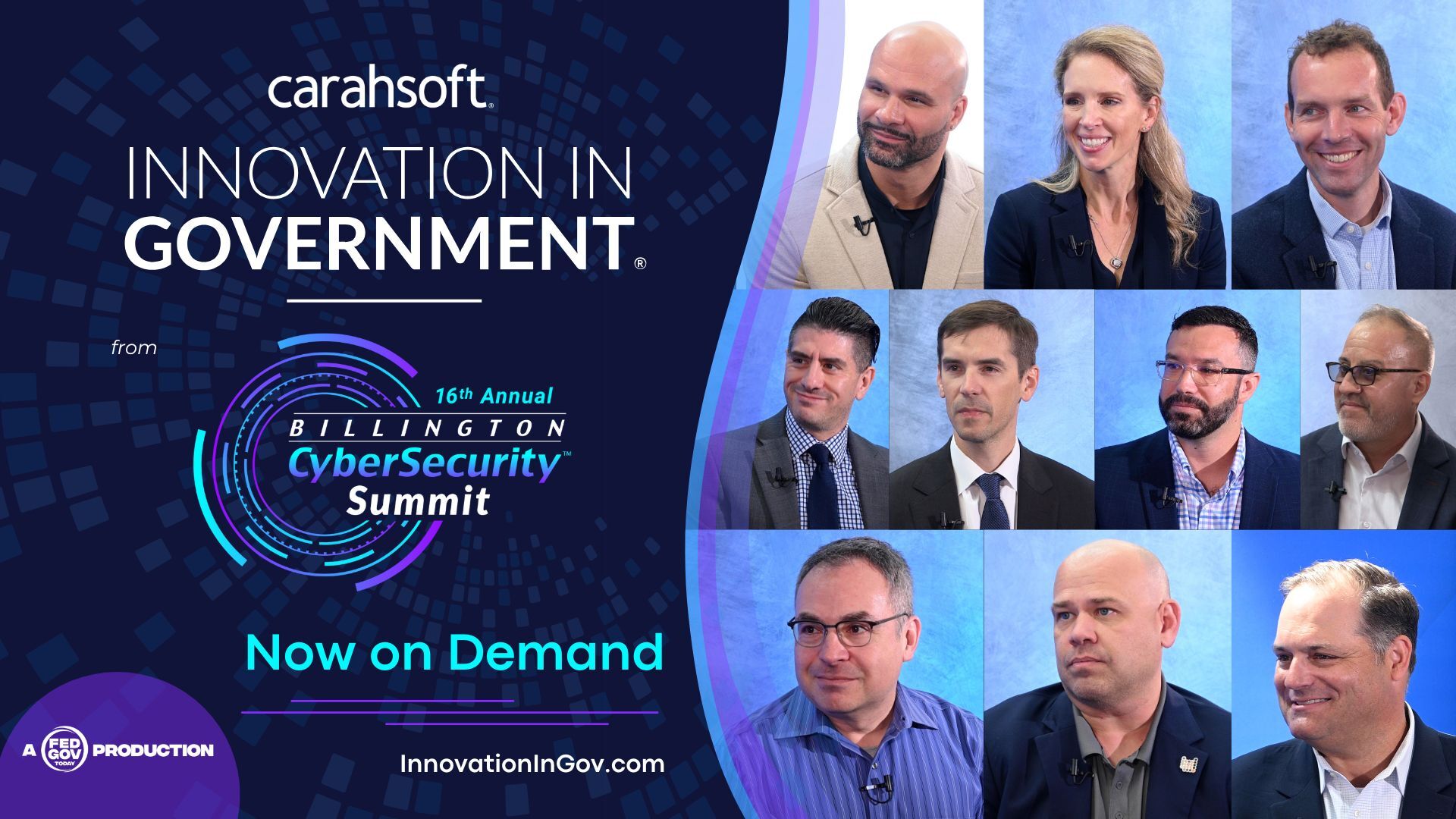Innovation in Government from the Billington CyberSecurity Conference
Cybersecurity is evolving at lightning speed — and federal leaders are racing to keep pace. Watch this special edition of Innovation in Government, filmed on location at the Billington CyberSecurity Summit in Washington, DC. This episode of Innovation in Government brings together leading voices from government and industry to explore the latest challenges, solutions, and innovations in the cyber landscape. The discussions span cutting-edge technologies like AI-driven defense, resilient software engineering, and zero trust, as well as operational issues such as workforce readiness, procurement, and healthcare resiliency. Together, these perspectives provide a comprehensive view of how agencies and partners are working to stay ahead of adversaries and strengthen America’s

What You’ll Learn
This program brings together leading voices to share practical insights on:
-
AI and Cyber Defense: How agentic AI and automation are changing security operations.
-
Zero Trust in Action: Overcoming cultural and technical barriers to adoption.
-
Software Resilience: Securing legacy and modern systems with advanced engineering.
-
The Cyber Workforce: Building readiness with data-driven insights.
-
Healthcare Resiliency: Protecting patient safety against ransomware threats.
-
Browser Isolation: Closing gaps in zero trust by securing the browser.
Why Watch?
1️⃣ Get insider perspectives from leaders at the intersection of government and industry.
2️⃣ Discover solutions to today’s most urgent cyber challenges, from AI to zero trust.
3️⃣ Gain actionable insights you can bring back to your agency or organization immediately.
Featured Speakers
-
Alex Whitworth, Cybersecurity Solutions Executive, Carahsoft
-
Bob Costello, CIO, CISA
-
Tiffany Kim, Public Sector Sales Leader, Tines
-
Dan Wallach, Program Manager, Information Innovation Office, DARPA
-
Matt Topper, CEO & Founder, UberEther
-
Matthew Isnor, Program Lead for Cyber Workforce Development, Office of the DoW CIO
-
Alfredo Rodriguez III, Program Lead for Cyber Workforce Data & Analytics, Office of the DoW CIO
-
Ronald Ringgold, Field CISO, Public Sector, SentinelOne
-
Brian Mazanec, PhD, Deputy Assistant Secretary, Director of H-CORE, Acting Director of ASPT, HHS
-
Justin Valdes, Senior Director, U.S. Public Sector, Menlo Security
Fill out the form below to watch the full program
By registering for this event and providing my contact information, I agree that Fed Gov Today its partners, and this event’s sponsors may contact me about this event and any other events, products, services, or offers in the future.
I acknowledge that any information I provide is subject to Fed Gov Today’s Privacy Policy.

